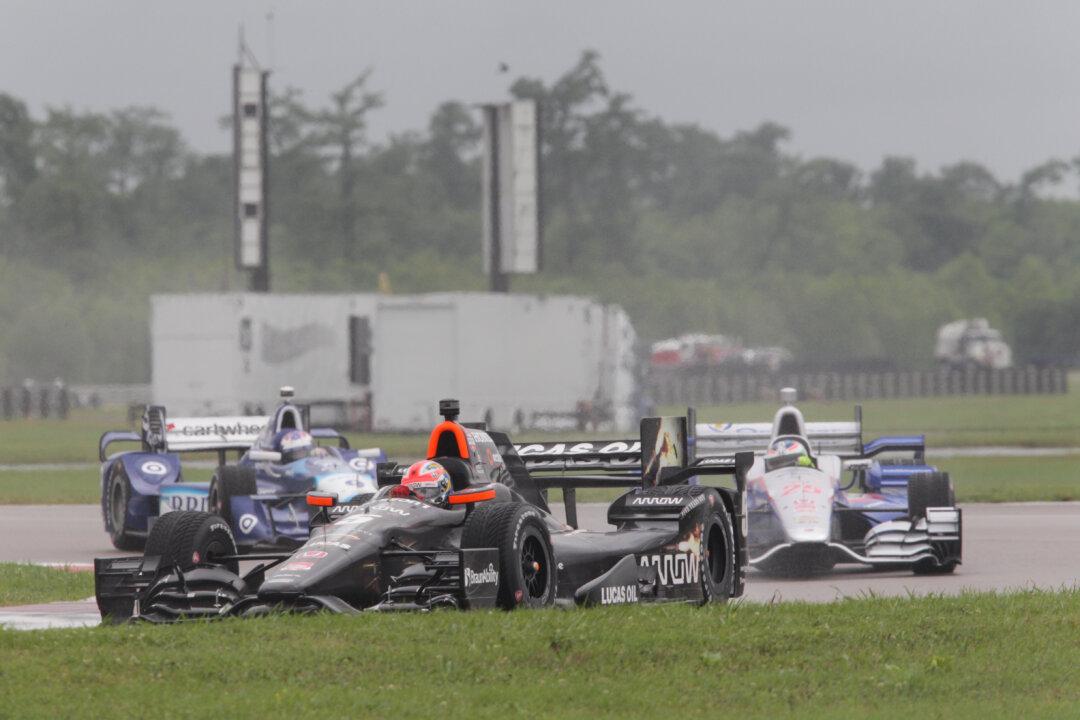For its second race of the 2015 season, IndyCar debuted in the Big Easy, running the Indy Grand Prix of Louisiana at Nola Motorsports Park on Sunday, April 12.
The weekend was plagued by rain. Qualifying had to be cancelled because of lightning strikes around the course, IndyCar had to move up the race start and shorten the length to try to squeeze the event in between thundershowers.
Because qualifying was cancelled, cars lined up on the grid according to entrant points, which meant Team Penske owned the front of the grid.
Everyone started on rain tires. Teams started switching to slicks on lap 13 and by lap 15 the whole field was on Firestone Reds, but there were streams running across the track in a couple places, which almost guaranteed that cars would go off—one or two of the two dozen drivers would misjudge and end up spinning. With the grass alongside the track soaking wet (or submerged) it was equally guaranteed someone would get stuck.
On lap 16 Gabby Chavez went off and got stuck. A track worker managed to push him back on track, but he stalled, bringing on a full-course caution.
With overenthusiastic driving and the pressure to get ahead before the next yellow flag, each restart was a brief sprint followed by a swift disaster.
The race went green on lap 20, but there was a huge puddle across the track at the last corner, Turn 13. James Jakes hit this while accelerating and spun, pushing Jack Hawksworth off into the tires.
At the head of the field Helio Castroneves tried to dive inside Francesco Dracone into Turn One, sending Dracone off the track with a flat right rear; Castroneves lost half his left front wing. Full-course caution number two.






